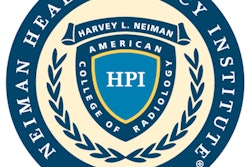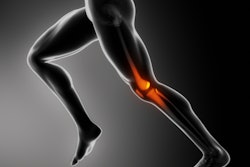
Led by a significant increase in the use of advanced imaging modalities, musculoskeletal imaging utilization in Medicare patients rose considerably over the past two decades, according to research published online August 4 in the American Journal of Roentgenology.
A team from the American College of Radiology's Harvey L. Neiman Health Policy Institute searched billing data from the U.S. Centers for Medicare and Medicaid Services (CMS) and found that CT, MRI, and ultrasound musculoskeletal imaging studies all experienced growth rates of at least 500% from 1994 to 2013. The researchers also found that radiology remained the leading billing specialty for all imaging modalities -- including dominant market shares for CT and MRI -- and physician offices and hospital outpatient departments were the most common locations for musculoskeletal imaging.
"These insights may have implications for radiology practice leaders in making decisions regarding capital infrastructure, workforce, and training investments to ensure the provision of optimal imaging services for extremity musculoskeletal care," wrote the group led by Dr. Soterios Gyftopoulos of NYU Langone Medical Center.
Utilization changes
To address knowledge gaps in how advances in imaging technology have affected utilization, the Neiman group sought to assess how musculoskeletal extremity imaging for the Medicare fee-for-service population changed between 1994 and 2013. After obtaining billing data from the CMS Medicare Physician/Supplier Procedure Summary Master Files for the 20-year period, the team used the Neiman Imaging Types of Service (NITOS) radiology claims classification system to identify the Healthcare Common Procedure Coding System (HCPCS) codes corresponding with nonvascular extremity imaging.
Only services with professional and global claims were included in the analysis to avoid double counting. Annual imaging utilization rates were stratified by the specialty group performing the imaging study and the place of service.
With the exception of radiography, musculoskeletal imaging use increased by at least a factor of five for each modality.
| MSK imaging utilization rate per 1,000 Medicare beneficiaries | |||
| 1994 | 2013 | Increase | |
| CT | 1.2 | 10.3 | 758% |
| MRI | 5.4 | 38.6 | 615% |
| Ultrasound | 1.8 | 10.8 | 500% |
| Radiography | 441.6 | 633.6 | 43% |
The use of MRI grew 638% from 1994 through 2009 but then declined by 3% from 2010 to 2013. Radiography, CT, and ultrasound showed more consistent growth during the study period, according to the authors.
"An understanding of the utilization rates of common imaging modalities is an important first step toward determining the most cost-effective imaging strategies for patients with musculoskeletal conditions," said senior author Dr. Richard Duszak Jr. of Emory University in a statement. "Our findings support observations that physicians are increasingly relying on advanced imaging to ensure that their patients with musculoskeletal diseases receive the best care."
Radiologists were the most common billing group for all musculoskeletal imaging modalities over the study period, maintaining top market shares in CT and MRI (96% and 84%, respectively, in 2013). Orthopedic surgery was the second most common billing group for radiography, MRI, and CT.
The relative market share for radiologists in ultrasound, however, was cut in half over the study period. Podiatrists, in particular, demonstrated marked growth in utilization of ultrasound; podiatry became the second most common billing specialty for ultrasound in 2001 and had an 18% market share in 2013, according to the researchers.
"The reasons for this rapid growth [in podiatry use of ultrasound] could be related to the various advantages of ultrasound imaging, including improved accessibility, portability, and low cost," the authors wrote. "However, a number of studies in the podiatry literature have touted ultrasound as a mechanism to enhance practice revenue, suggesting that this could be a dominant driver of this utilization change. The rapid growth in utilization of ultrasound by podiatrists led to a change in current procedural terminology (CPT) coding and valuation for extremity ultrasound services in 2011, which coincided with a sudden drop in billing for these services by podiatrists in 2011."
As for the location of service, the physician office was the most common venue for radiography, MRI, and ultrasound. Hospital outpatient and inpatient settings were the most common locations for CT, however.
Implications
The results have several potential implications for the future of extremity musculoskeletal imaging, according to the researchers. For example, hospital administrators and radiology group leaders seeking to improve patient access should consider investing in advanced imaging modalities, given the apparent growth and ongoing utilization in the care of patients with musculoskeletal conditions.
Furthermore, they suggested that resources should be focused on physician offices and hospital outpatient departments -- the most common sites for musculoskeletal imaging.
"Finally, nonvascular extremity ultrasound is now being performed and billed more commonly by a wider range of nonradiology specialties, potentially without the same standards and qualifications as radiologists who perform and interpret this type of imaging after lengthy training and board certification in diagnostic imaging," the authors wrote. "Thus, [payors] and accreditation bodies should re-examine technical and performance standards for nonvascular extremity ultrasound imaging given the potential patient hazards of increased utilization of lower-value and lower-quality imaging."




















